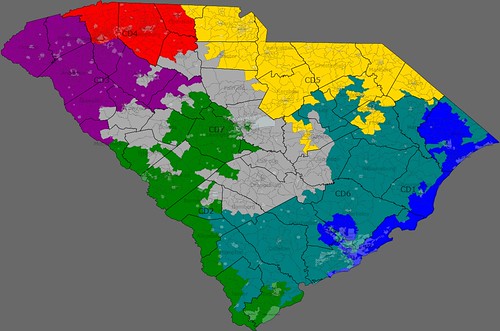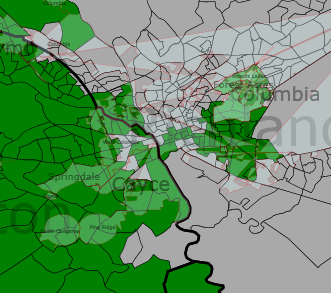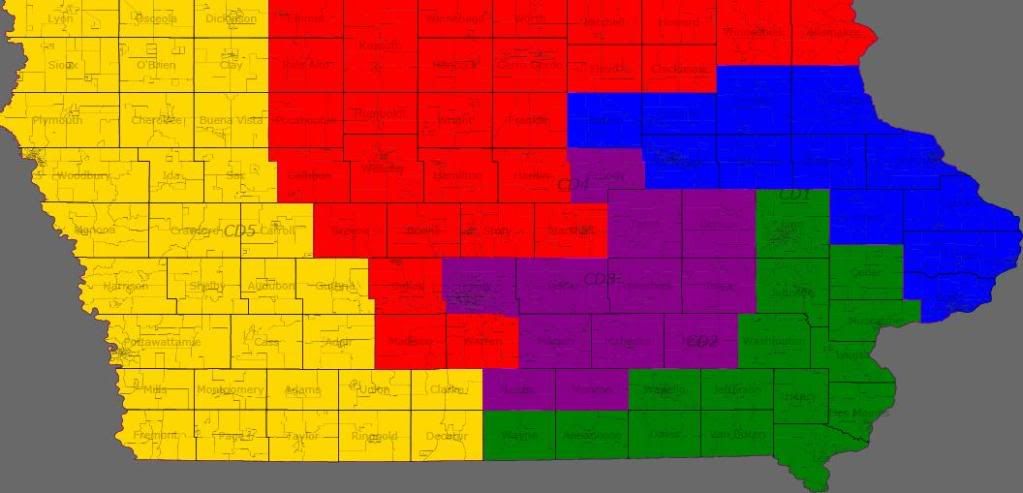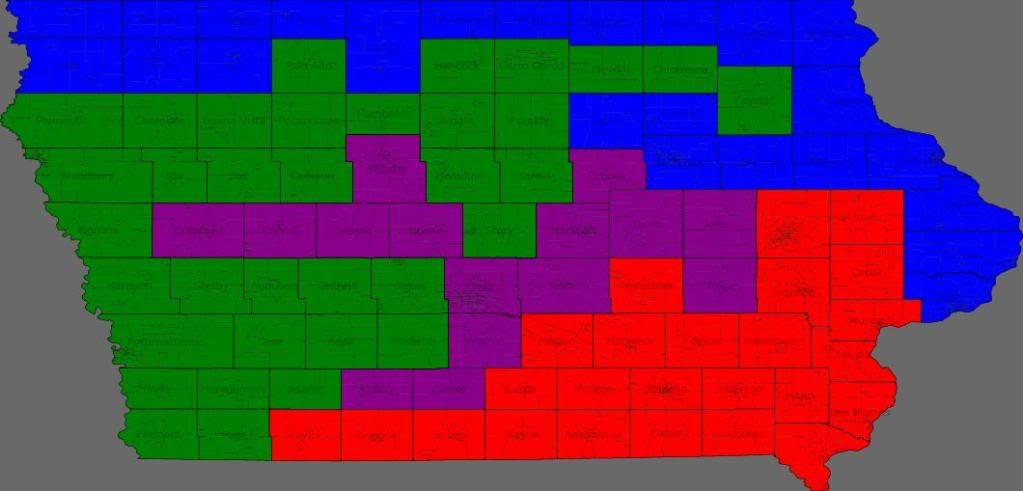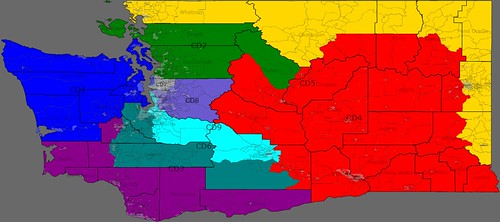(Crossposted at Blue Commonwealth)
I decided to take a closer look at the House of Delegates races that are going to be crucial to the control of the chamber. What I’ve come away with is that while Democrats have a number of good targets, it will be an uphill battle to claim the six seats needed to win control of the House. My list follows below the jump. Please let me know if any districts have escaped my attention.
Democratic Targets
7th (Montgomery, Pulaski, Radford) – Dave Nutter won 53-47 over Peggy Frank in 2007, and she’s come back for a rematch. Creigh Deeds on the ticket would be a boon for her in this SWVA district.
13th (Loudoun, Prince William) – Bob Marshall is a far-right culture warrior in a rapidly-expanding exurban district. He trounced Bruce Roemmelt in 2005 and 2007, but Air Force vet John Bell looks to be a stronger challenger. Marshall will have to fight the increasing Democratic strength in this district — after leaning Republican for years, it voted narrowly for Obama in 2008.
14th (Danville, Henry, Pittsylvania) – Danny Marshall narrowly held off Adam Tomer in 2007 52-48, and faces another strong challenger, this time former Danville Mayor Seward Anderson. The problem for Anderson is winning enough of the vote in Pittsylvania; Marshall narrowly lost Danville but won an overwhelming 63% in Pittsylvania to hold on.
17th (Botetourt, Roanoke County, Roanoke City) – Incumbent William Fralin is retiring, the only reason this seat is a target, as it’s a pretty solid Republican district (although Kaine did get 47% there). Democrat Gwen Mason, a member of the Roanoke City Council, has been able to sit back and accrue a war chest as five Republicans battle it out for the nomination.
42nd (Fairfax) – Dave Albo is notorious for being the driving force behind the incredibly-unpopular abusive driving fees that were passed in 2007 and summarily repealed the next year. Greg Werkheiser, Albo’s 2005 opponent who came within a few percent of beating Albo, is running again.
50th (Manassas, Manassas Park, Prince William) – This will be the third matchup between Republican Jackson Miller and Democrat Jeanette Rishell. Rishell lost 53-47 in a 2006 special election, then by 61-39 in 2007. This is a swing district, and Rishell is good at raising money, but it remains to be seen whether she can get voters on her side this time.
52nd (Prince William) – Jeff Frederick, ostracized by his party, is retiring, but supposedly wants to un-retire. Problem is, his wife wasn’t the only candidate to file for the Republican primary — Rafael Lopez, who seems to have raised no money so far, also filed, and until he withdraws, he can’t weasel his way back into office. Democrats will choose between pastor Luke Torian and attorney Michael Hodge. Keep in mind, this district was won by Obama 63-36 — not fertile ground for a Republican hold.
58th (Albemarle, Fluvanna, Greene, Orange) – Another masterful Republican gerrymander, this district is basically a New Jersey-shaped wedge around Charlottesville that has an ever-so-slight Republican lean. Robert Bell faces a challenge from Cynthia Neff, a retired IBM executive, but get this — Bell has over $500,000 on hand. Not a typo, half a million dollars. I guess he’s been wanting to run statewide for a while.
60th (Charlotte, Halifax, Prince Edward) – This is a strange one. Republican Clarke Hogan is retiring. Republican attorney James Edmunds is facing Democratic Charlotte County Supervisor David Guill, but neither seems to have raised much or any money. The district has a natural Republican lean, but it’s not so far to the right that Edmunds only needs to show up to win.
73rd (Henrico, Richmond City) – Suburban Richmond is home to John O’Bannon, who has over $150,000 in the bank and is being challenged by college professor Thomas Shields. Shields has a lot of catching up to do to match O’Bannon’s fundraising. This is actually the first time a Democrat has bothered to run against O’Bannon, who succeeded Eric Cantor following his election to the House in 2000. The district is one of many in the Commonwealth that is moving towards the center after being Republican-leaning for a while.
82nd (Virginia Beach) – Republican Bob Purkey, a former Wall Street broker, sleepwalks through one campaign after another. His first serious opponent in years is Republican-turned-Democrat Peter Schmidt, who challenged Purkey in the Republican primary in 2005. This is a fairly Republican district, but Schmidt’s profile as a moderate former Republican could be a boon in his bid.
86th (Fairfax, Loudoun) – Tom Rust’s first serious challenge came in 2007, when he was held to 53% by Jay Donohue. He is being challenged this time by Loudoun County Supervisor Stevens Miller. Miller’s geographic location may help, as Rust only narrowly won the Fairfax part of the district but dominated the Loudoun portion 55-45.
93rd (James City, Newport News) – Phil Hamilton represents one of the most Democratic districts of any Republican in the House of Delegates. He has a war chest of over $100,000, but his opponent, attorney Robin Abbott, has nearly matched that in just two months of fundraising.
94th (Newport News) – Glenn Oder is yet another Republican in a swing district with a slight Republican lean, although it was won by Obama last year. He hasn’t faced a Democrat since his initial election in 2001, but will compete with attorney Gary West.
Republican Targets
21st (Virginia Beach) – Freshman Bobby Mathieson trounced John Welch in 2007, but this time he faces Ron Villanueva, a member of the Virginia Beach City Council. There is a small but significant Filipino community in Virginia Beach which Villanueva might be able to appeal to. However, this is the most Democratic House district in the city.
23rd (Amherst, Lynchburg) – Democrat Shannon Valentine won the seat in a 2006 special election and was unopposed in 2007, but this year she will face one of two Lynchburg city council members who are vying for the Republican nomination.
32nd (Loudoun) – David Poisson underperformed in 2007 after defeating Dick Black in 2005, but it remains to be seen if his 2009 opponent, Tag Greason, is up to the challenge. This is a swing district with a slight Democratic lean.
34th (Fairfax) – When longtime incumbent Vince Callahan retired in 2007, this was considered an easy pickup. He was the last Republican from inside the beltway in the House of Delegates, and the district was won by every Democrat from John Kerry forward. However, Margi Vanderhye only managed a 3% victory. She’s being challenged by Barbara Comstock, a much more conservative Republican than the moderate Callahan, but Comstock is outraising Vanderhye so far.
35th (Fairfax) – Steve Shannon’s successor in this district should be a Democrat, but open seats can be unpredictable. Republican James Hyland has a clear path to the nomination; Democrats are choosing from four candidates.
44th (Fairfax) – Kris Admunson has a strong fundraiser running against her, but this is a very Democratic district.
51st (Prince William) – Paul Nichols picked up this seat from retiring Republican Michele McQuigg in 2007 against a pretty lame opponent, but similar to Vanderhye, only won by about 4%. He’s facing Richard Anderson in November.
64th (Franklin City, Isle of Wight, James City, Southampton, Surry, Williamsburg) – William Barlow is a longtime incumbent who has been winning with shrinking margins over the years, from 65-32 in 2001 to just 54-45 in 2005, his last contested election. The Republicans have chosen attorney Stan Clark to face off against him.
67th (Fairfax, Loudoun) – Chuck Caputo easily defeated wingnut Chris Craddock to win an open Republican seat in 2005, then nearly lost the seat in 2007, winning only 53-47 against Marc Cadin. Now he will face another challenge, this time from entrepreneur Jim LeMunyon.
83rd (Virginia Beach) – Retired Navy Commander Joe Bouchard defeated Chris Stolle, brother of State Sen. Ken Stolle, by a mere 131 votes in 2007. Stolle has come back for a rematch, but can’t depend on his brother’s help this time, as Ken is busy running for Virginia Beach Sheriff.
